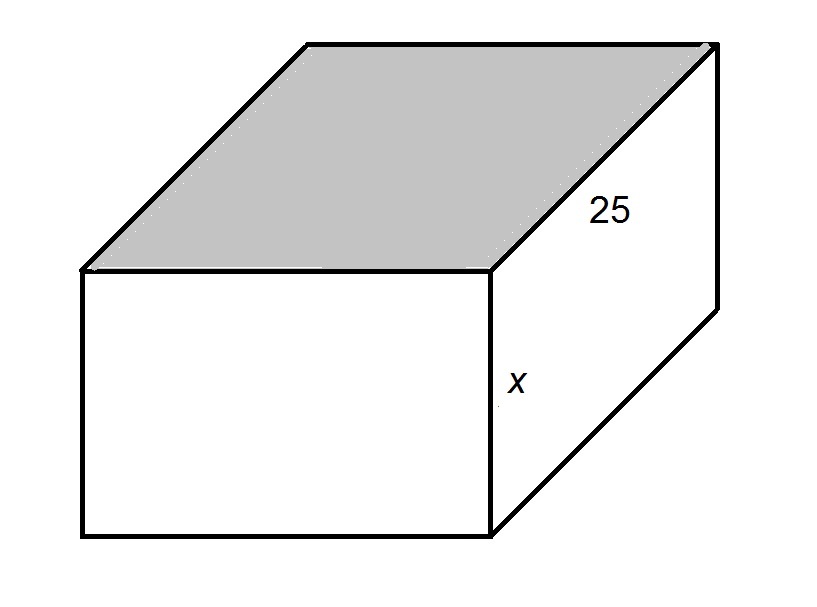All SAT II Math I Resources
Example Questions
Example Question #53 : 3 Dimensional Geometry
What is the surface area of a cylinder with height 10 and radius 7?
The formula of the surface area of a cylinder is:
In this problem h is 10 and r is 7. Substituting in those values gives us:
Simplifying and combining the like terms results in:
Example Question #131 : Geometry
Figure not drawn to scale.

Find the surface area of the box above.
Surface area: 82 yd3
Surface area: 84 yd2
Surface area: 84 yd3
Surface area: 82 yd2
Surface area: 48 yd2
Surface area: 82 yd2

You can find the surface area of a box by following the equation below:
The surface area of the box is 82yd2 (remember that area measurements are square units NOT cubic units)
Example Question #55 : 3 Dimensional Geometry

The shaded face of the provided rectangular prism is a square. If the surface area of the prism is 


Since the top face of the prism is a square, the common sidelength - and the missing dimension - is 25.
The surface area 




Setting

Example Question #51 : 3 Dimensional Geometry
How many vertices does a polyhedron with twenty faces and thirty edges have?
By Euler's Formula, the relationship between the number of vertices 


Set 


The polyhedron has tweve vertices.
Example Question #51 : 3 Dimensional Geometry
How many edges does a polyhedron with nine vertices and eleven faces have?
By Euler's Formula, the relationship between the number of vertices 


Set 


The polyhedron has eighteen edges.
Example Question #131 : Geometry
A rectangular prism has a height of 4 in., length of 8in., and a width of 7in. Find the volume of the prism.
To find the volume of a rectangular prism we use the equation of:
Now substituting in our values we get:
Example Question #51 : 3 Dimensional Geometry
What is the volume of a triangular prism having a base of 2, a height of 8, and second height of 14?
To find the volume of a triangular prism we use the equation
In our case our
Therefore,
Example Question #2 : Other 3 Dimensional Geometry
If a cube has a surface area of 
The longest diagonal of a cube transverses the interior of the figure:

This distance is defined by the super pythagorean theorem :
where 


We can use the given surface area to find the length of the side:

We can use this value for the side to plug into the super pythagorean theorem
Which can be simplified to
Example Question #1 : Coordinate Geometry
Which of the following points is in Quadrant IV on the coordinate plane?
Two of these points are in Quadrant IV.
Quadrant IV consists of the points with positive 


Example Question #1 : Parabolas And Circles
Give the axis of symmetry of the parabola of the equation
The line of symmetry of the parabola of the equation
is the vertical line
Substitute 
The line of symmetry is
That is, the line of the equation 
Certified Tutor
Certified Tutor
All SAT II Math I Resources


























































































